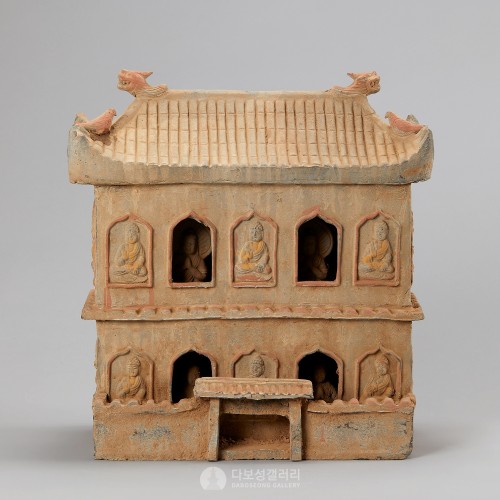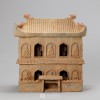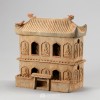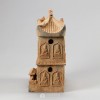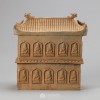본문
这是在灰色陶器上涂上黄土色和红色后烧制的二层陶器。
屋顶上精巧雕刻龙头和鸟,正面每层都有两个五角形的门,里面置双手合十的佛坐像。未打通的门上阳刻着一只手向上抬,一只手向下垂下的施无畏与愿手印的佛像,不仅正面,侧面与背面阳刻同样的佛像。
一层正面置有瓦房顶的墙,墙的中间打成四角形作为大门。
这种灰色陶器是在社会稳定、农业和手工业发达的汉代埋葬文化的盛行而开始制造的。该灰色陶器一角的屋顶雕刻龙,因此推测是汉朝皇室的随葬品。
A two-story temple painted yellow and red on top of gray pottery.
Dragon heads and birds are exquisitely carved on the roof, and there are two pentagonal doors on each floor on the front, inside which are seated Buddha statues with folded hands. On the unopened door is engraved a Buddha statue with one hand upward and the other hand down, showing the mudra of Shi Wuwei's wish, not only on the front but also on the side and the back.
On the first floor, there is a wall with a tiled roof on the front, and the middle of the wall is made into a square as a gate.
This kind of gray pottery began to be produced during the prevalence of burial culture in the Han Dynasty when society was stable and agriculture and handicrafts were developed. A dragon is carved on the roof at one corner, implying that it is one of the burial goods of the imperial family of the Han Dynasty.
